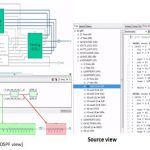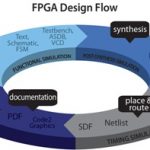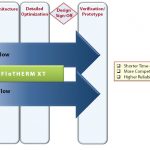When we talk about parasitic, we talk about post layout design further expanded in terms of electrical components such as resistances and capacitances. In the semiconductor design environment where multiple parts of a design from different sources are assembled together into highly complex, high density SoC, imagine how complex… Read More
Electronic Design Automation
ESD at TSMC: IP Providers Will Need to Use Mentor to Check
I met with Tom Quan of TSMC and Michael Beuler-Garcia of Mentor last week. Weirdly, Mentor’s newish buildings are the old Avant! buildings where I worked for a few weeks after selling Compass Design Automation to them. Odd sort of déja vu. Historically, TSMC has operated with EDA companies in a fairly structured way: TSMC … Read More
Have you Tried ALDEC?
I must admit. I was too comfortable. Let me explain, I’m a ModelSim guy from Mentor Graphics. I did not really think nor care much of the other RTL simulator options. How could someone build a better tool with respect to simulation? Let me introduce you to Aldec. Aldec was founded in 1984 by Dr. Stanley M. Hyduke. 30 years later they are… Read More
Just Released! Fabless: The Transformation of the Semiconductor Industry
The book “Fabless: The Transformation of the Semiconductor Industry” is now available in the Kindle (mobi) and iBooks (ePub) formats. We are really looking forward to your feedback before we go to print in March. This was truly a Tom Sawyer experience for me. As the story goes Tom made whitewashing a fence seem like fun so his friends… Read More
A Power Optimization Flow at the RTL Design Stage
SoC designers can code RTL, run logic synthesis, perform place and route, extract the interconnect, then simulate to measure power values. Though this approach is very accurate, it’s also very late in the implementation flow to start thinking about how to actually optimize a design for the lowest power while meeting all… Read More
Semiconductor IP and Correct-by-construction Workspaces
SoC hardware designers could learn a thing or two from the world of software development, especially when it comes to the topic of managing complexity. Does that mean that hardware designers should literally use a software development environment, and force fit hardware design into file and class-based software methodologies?… Read More
Smart Clock Gating for Meaningful Power Saving
Since power has acquired a prime spot in SoCs catering to smart electronics performing multiple jobs at highest speed; the semiconductor design community is hard pressed to find various avenues to reduce power consumption without affecting functionality and performance. And most of the chips are driven by multiple clocks that… Read More
Digital @ Nano-Scale while Analog Hovers @ 65nm and Above
Who’s going to DesignCon next week? I am, absolutely. Dr. Hermann Eul, Vice President & General Manager, Mobile & Communications Group, Intel Corporation will be keynoting on Tuesday. This one I want to hear! Intel missed mobile at 32nm, 22nm, and 14nm. Lets see what they have planned for 10nm. Something good I hope!… Read More
The Semiconductor Landscape – III
In continuation to my earlier observations and anticipations (landscape1, landscape2) which came up to my expectations, I was further inspired to ponder over the macros of our ever growing semiconductor industry. We may argue the business is stagnating, we may argue that the pace of scaling is slowing, but when I look back at the… Read More
Managing Heat for System Reliability
In most of the electronic equipments, semiconductor chips are a major source of heat generation. And in semiconductor designs several hardware and software techniques are being used to contain power dissipation; a major cause for heat. However due to multiple functionality being squeezed into small form factors, we continue… Read More







Quantum Advantage is About the Algorithm, not the Computer